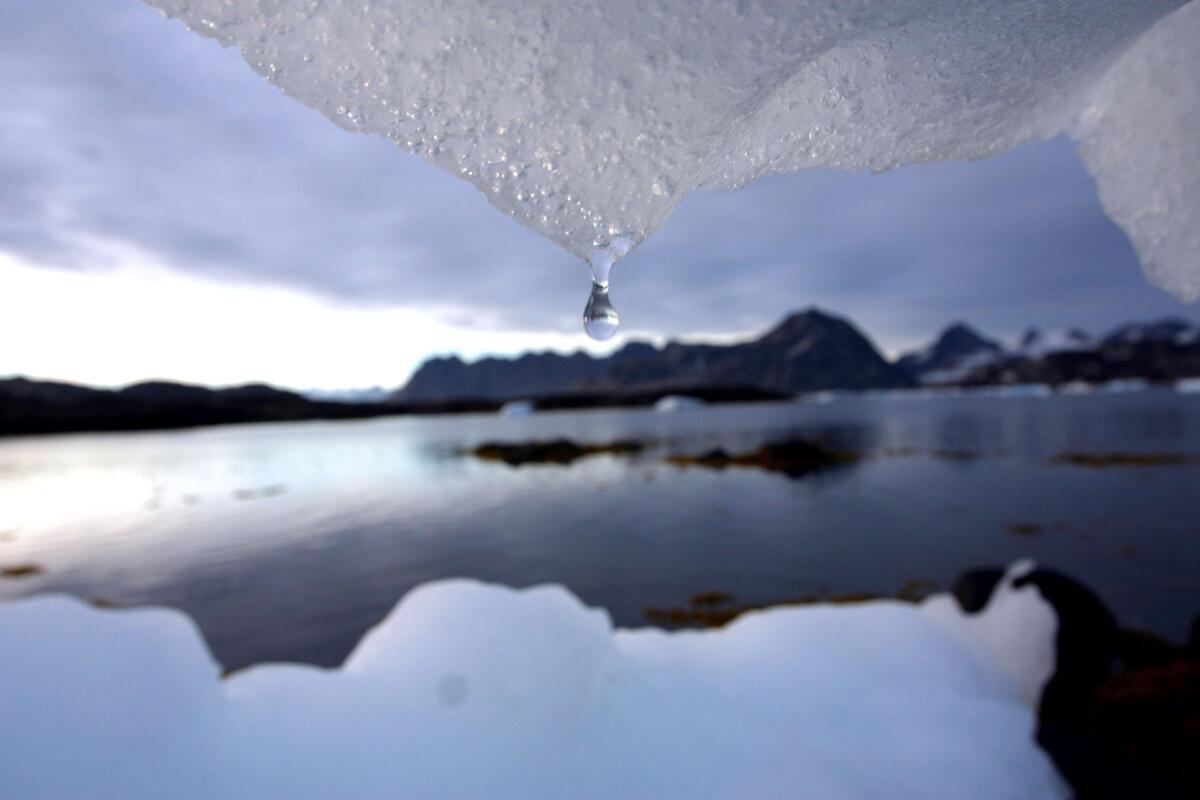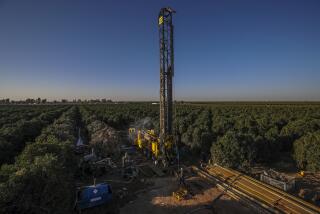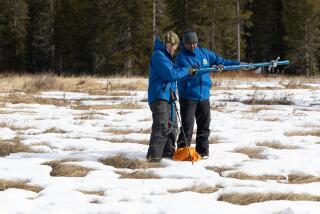Thirsty continents are slowing down expected sea level rise, scientists say

- Share via
Despite the accelerated melting of glaciers and ice sheets, sea levels aren’t rising quite as quickly as scientists anticipated. The reason: Continents are absorbing more of the water before it flows into the seas, according to a new study.
Scientists at NASA’s Jet Propulsion Laboratory figured this out by measuring changes in Earth’s gravity with twin satellites orbiting the Earth in tandem. Over the past decade, thirsty continents have slowed the rate of sea level rise by about 20%, or about 1 millimeter per year, according to the study published in Science.
The force of gravity depends on mass: The more there is, the stronger the gravitational attraction. And on Earth, the only thing heavy enough and mobile enough to affect the planet’s gravity is water, said John T. Reager, a JPL hydrologist and the study’s lead author.
MORE: Get our best stories in your Facebook feed >>
“That movement of water has one of the biggest effects on the earth’s gravity field,” Reager said.
Each year, Earth’s continents cycle through 6 trillion tons of snow, surface water, soil moisture and groundwater. These stores of water are then gradually released into the ocean, allowing the process to begin again. But the strength of that cycle can vary from year to year and decade to decade, due to natural variability in the weather and climate.
Over the last century, however, the rate of sea level rise has accelerated as melting glaciers and ice sheets have poured more water into the ocean, and warming temperatures have caused the sea’s volume to expand.
Between April 2002 and November 2014, the years that Reager and his colleagues studied, the sea level rose at an average rate of 2.9 millimeters per year – nearly double the average rate seen during the 20th century, according to estimates from the Intergovernmental Panel on Climate Change.
That’s fast, to be sure, but still not quite as fast as the scientists would have expected.
To solve this puzzle, the scientists considered a fourth factor: the water stored on land.
Using satellite data from NASA’s Gravity Recovery and Climate Experiment (GRACE) mission, they were able to measure the water cycle’s influence on sea level for the first time.
GRACE uses a pair of satellites to track changes in Earth’s gravity field. That allowed them to see where the water was and where it wasn’t.
The twin satellites, called Tom and Jerry, constantly chase each other around the globe in an orbital game of cat-and-mouse. When Jerry flies near a massive object like a mountain, the tug of gravity will pull him toward it and the distance between him and Tom will grow.
As Jerry passes the mountain, the effect happens in reverse: The tug of the mountain’s gravity pulls him back, allowing Tom to catch up.
Meanwhile, scientists on the ground measure the change in distance between the two satellites. Those changes in distance reveal how the strength of gravity has changed at different points on Earth’s surface.
“In Southern California we can see the pull of gravity decreasing because of the drought,” said Alex Gardner, a JPL glaciologist who worked on the study. “When there’s a big flood event, we can see the pull of gravity increasing.”
Between 2002 and 2014, natural climate and weather cycles brought more rain and snow over land, where it collected in the soils and caused water tables to rise, Reager said.
During this time, the continents soaked up an extra 3.2 trillion tons of water, slowing the rate of sea level rise by about 0.71 millimeters per year.
But the pattern won’t continue indefinitely. Eventually, Gardner said, he expects the continents to start to lose water mass again.
“The land can only hold so much water,” Gardner said. “The expectation is this additional soaking up of water is not going to last forever.”
The only way to abate the rising seas is to reduce the amount of energy Earth absorbs, and the only way to do that is to stop emitting CO2 and other greenhouse gases, Gardner said.
“We can’t compete with the Earth’s system. It’s just so huge,” he said. “Some years are wet, some years are dry. You wait long enough and the climate wins. Climate always wins.”
Follow me on Twitter @seangreene89
MORE FROM SCIENCE
Way beyond diamonds: A look at some of the rarest minerals in the world
Your Neanderthal inheritance could affect your mood, your skin and your smoking habits
‘We can hear the universe’: Scientists detect gravitational waves, predicted by Einstein







